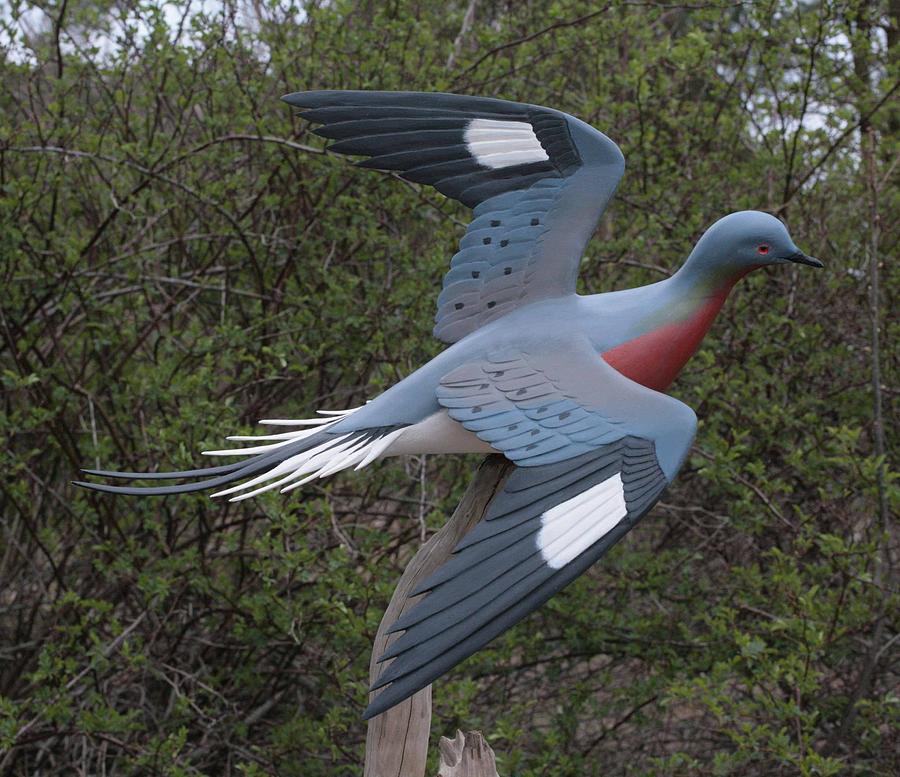

Alexander Wilson, the other great bird observer of the time, reckoned that a flock he saw contained 2,230,272,000 individuals. In 1813, John James Audubon saw a flock-if that is what you call an agglomeration of birds moving at sixty miles an hour and obliterating the noonday sun-that was merely the advance guard of a multitude that took three days to pass. The passenger pigeon was also the most numerous bird species in North America, and possibly the world, dominating the eastern half of the continent in numbers that stagger the imagination. It evolved on the unspoiled continent and was allied with the big trees that once covered much of the Northeast and the Midwest. It was here, like the American bison, when Europeans arrived, and it was here when the peoples we consider indigenous migrated across their land bridge thousands of years before that. Unlike the rock pigeon-domesticated six thousand years ago, now feral, and brought to these shores by Europeans in the early seventeenth century-the passenger pigeon was native to North America, where it roved over a billion acres of the continent searching for bumper crops of tree nuts. The passenger pigeon-sometimes called “the blue pigeon,” for its color, though the blue was blended with gray, red, copper, and brown-should not be confused with its distant cousin, the message-bearing carrier pigeon, which is really just a domesticated rock pigeon in military dress. Even before the age of bioengineering, Ectopistes migratorius could seem as much science-fiction fable as fact, which is why it is good to have Greenberg’s book, the first major work in sixty years about the most famous extinct species since the dodo. This thought experiment occurred to me while reading “A Feathered River Across the Sky: The Passenger Pigeon’s Flight to Extinction” (Bloomsbury), Joel Greenberg’s study of a bird that really did vanish after near-ubiquity, and that really is the subject of Frankenpigeon dreams of resurrection.


If the birds had been carried off in a mass avian rapture, or a pigeon-specific flu, you might let them pass without guilt, but if they had been hunted to death by humans you might feel honor-bound to genetically engineer them back to life. Would you grieve for the loss of a familiar creature, or rip out the spikes on your air-conditioner and celebrate? Perhaps your reaction would depend on the cause of the extinction. It was gone not simply from your window ledge but from Piazza San Marco, Trafalgar Square, the Gateway of India arch, and every park, sidewalk, telephone wire, and rooftop in between. Imagine that tomorrow morning you woke up and discovered that the familiar rock pigeon-scientifically known as Columba livia, popularly known as the rat with wings-had disappeared. In his new book about the passenger pigeon, the naturalist Joel Greenberg sets out to answer a puzzling question: How could the bird go from a population of billions to zero in less than fifty years? Painting by Walton Ford / Photograph by Butcher Walsh


 0 kommentar(er)
0 kommentar(er)
